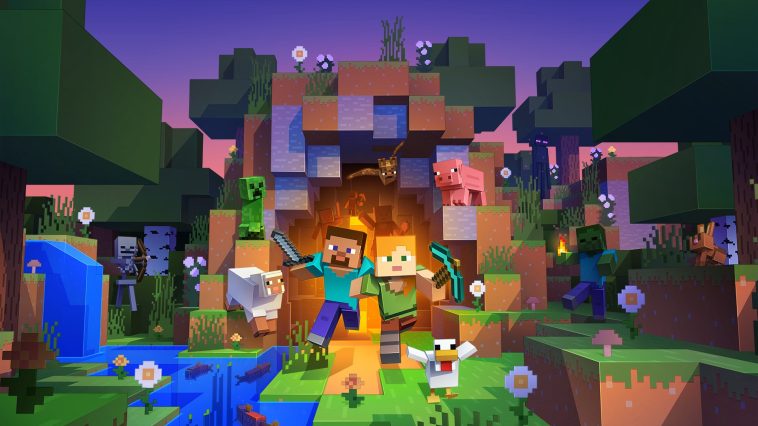Introduction.
Ready to take your Minecraft experience to the next level and play with friends in your world? Hosting a Minecraft server allows you to create a custom world, set rules, and invite friends to join the fun.
Whether you’re a seasoned player or just starting, this guide will walk you through the steps of setting up your very own Minecraft server. There are two main approaches to consider: self-hosting and using a hosting service.
We’ll explore both options, discussing the pros and cons of each, to help you choose the method that best suits your needs and technical expertise.
So, grab your pickaxe, prepare for an adventure, and let’s dive into the exciting world of Minecraft server hosting!
Why Should I Host a Minecraft Server?
For Minecraft enthusiasts, building elaborate worlds and exploring endless possibilities is a core part of the game’s charm.
But what if you could take things a step further and create a personalized world to share with friends or even the wider Minecraft community?
Hosting your own Minecraft server unlocks a treasure trove of unique experiences, making it a venture worth exploring.
1. Tailor Your World, Forge Your Rules.
One of the most appealing aspects of hosting a server is the unmatched control you wield. Unlike public servers, your world becomes your canvas.
Craft custom rules, install exciting mods, and configure the gameplay to your exact preferences. Whether you envision a peaceful survival haven with friends or a competitive PvP arena, the possibilities are boundless.
2. Forge a Community and build Lasting Bonds.
Hosting a server isn’t just about creating a world; it’s about fostering a community. Invite friends, and family, or even open your server to the public and watch your world come alive with fellow players.
Build lasting connections, collaborate on grand projects, and share the joy of Minecraft with others who share your passion.
3. Embrace the Challenge, and Gain Valuable Skills.
Setting up and maintaining a Minecraft server can be a rewarding learning experience. You’ll delve into server management, explore technical aspects of the game, and potentially gain valuable problem-solving skills.
This journey can be incredibly enriching, especially for those with an interest in technology or server administration.
4. Keep the Adventure Going, 24/7.
Unlike playing on someone else’s server, hosting your world means it’s always available. You and your fellow players can log in and continue your adventures anytime, without relying on the server owner’s online status. This constant accessibility allows for a much more immersive and convenient gameplay experience.
How Do I Host a Minecraft Server?
So you’re tired of exploring the Minecraft world alone and want to create a shared experience with friends. Hosting your server is the perfect way to do that!
This guide will walk you through the steps of setting up your very own Minecraft server, from choosing the right method to getting your friends to join the fun.
Choosing Your Hosting Method:
There are two main approaches to hosting a Minecraft server:
1. Self-hosting: This gives you complete control over your server but requires more technical know-how. You’ll need to:
- Download the server software: Available for free on the official Minecraft website https://www.minecraft.net/en-us/download/server.
- Install Java: Ensure you have the latest version of Java installed on your computer, as it’s essential for running the server software.
- Configure the server: Edit the server.properties file to customize settings like world name, difficulty, and game mode.
- Port forwarding: Configure your router to allow incoming connections to the specific port your server will use (default port is 25565).
2. Hosted servers: This is a more convenient option, especially for beginners, as the technical setup is handled by a hosting provider. You’ll pay a monthly fee for the service, and the provider will take care of software installation, configuration, and ongoing maintenance.
Getting Started:
Once you’ve chosen your method, follow these steps:
- Download and install the server software: Follow the instructions for your chosen method (self-hosting or hosted server).
- Start the server: Run the server software to generate the necessary files and configure basic settings.
- Join your server: If self-hosting, find your local IP address (search online for “how to find my IP address”) and use it to connect to the server within your local network. For hosted servers, follow the provider’s instructions to connect.
Bonus Tip: Explore server administration tools like server management panels or plugins to enhance your server’s functionality and add unique features.
Sharing the Fun:
With your server up and running, it’s time to invite your friends!
- Self-hosting: Share your public IP address with your friends, ensuring they know the port number if it’s different from the default (25565).
- Hosted servers: Most providers offer a server address or domain name you can share with your friends for easy connection.
Conclusion.
Remember, with great server power comes great responsibility! Set clear rules for your server and establish guidelines for appropriate behavior to ensure everyone has a fun and enjoyable experience.
Now you’re all set to build, explore, and create unforgettable memories with your friends in your very own Minecraft world!






GIPHY App Key not set. Please check settings